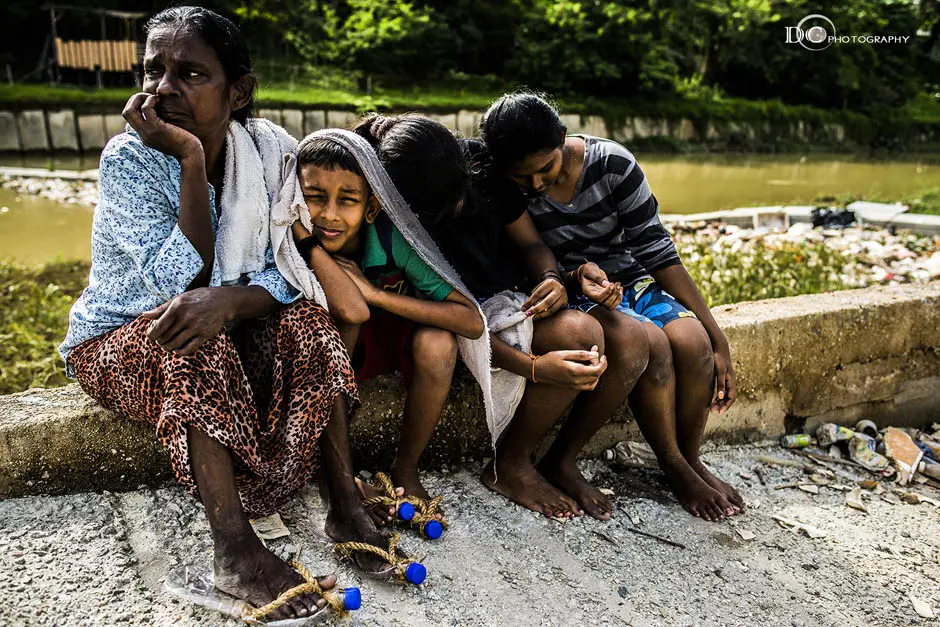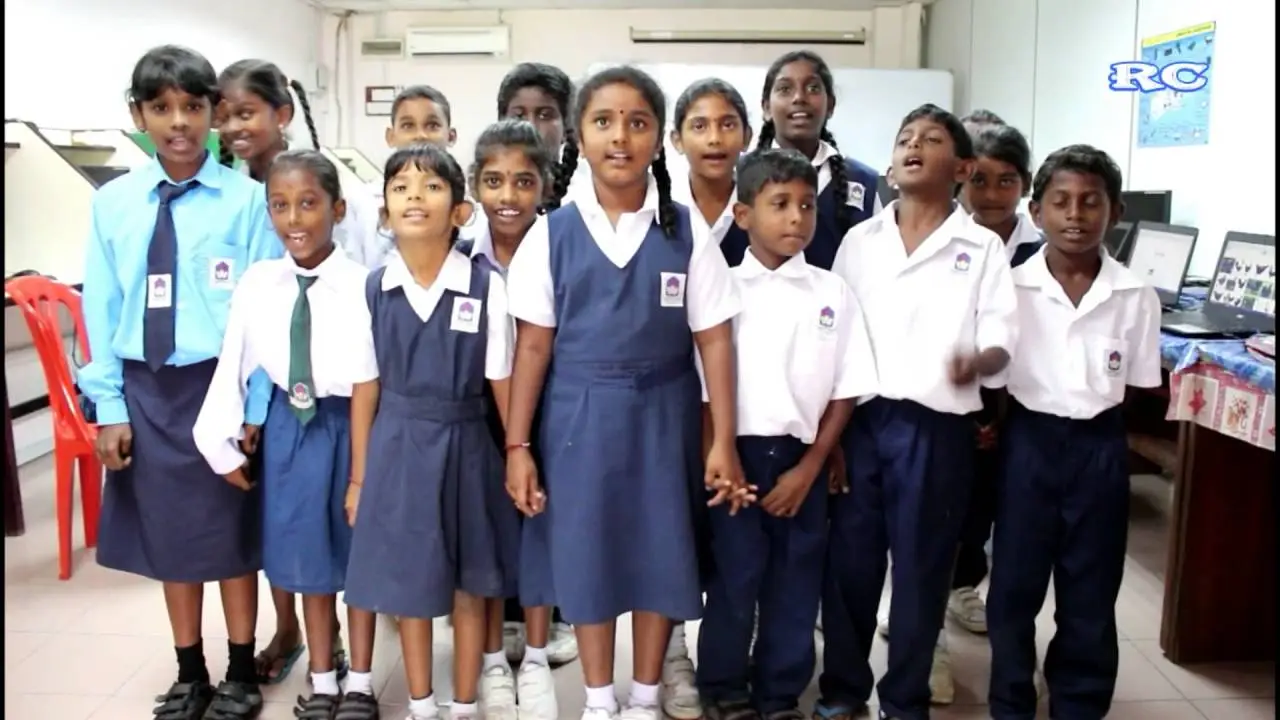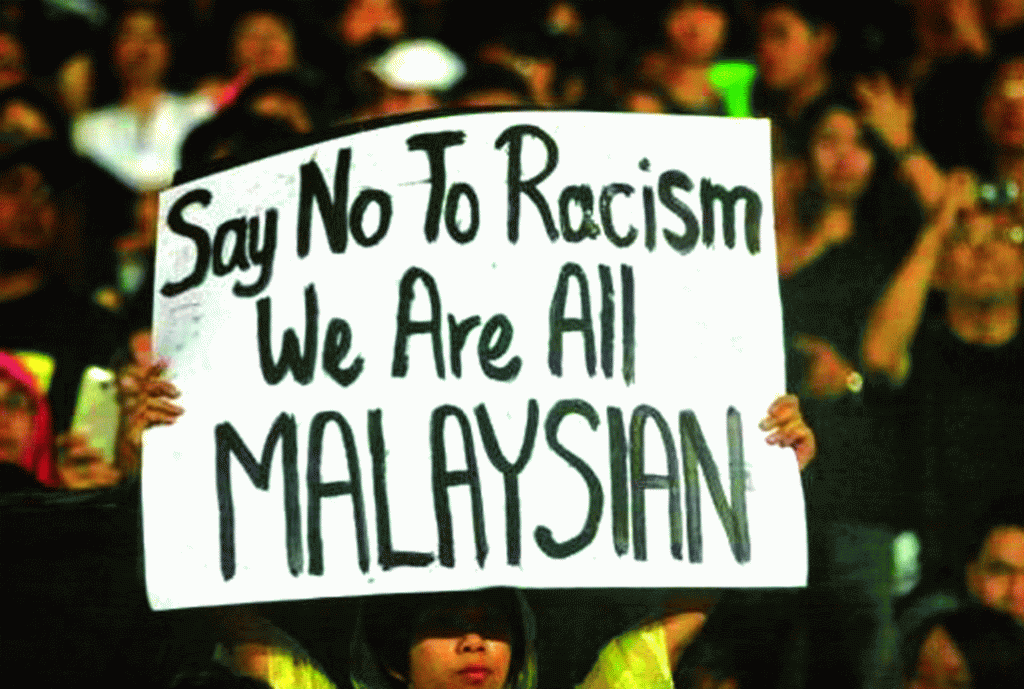Malaysian Indians make up an estimated 32.7 million (6.6%) people of the nation’s total population in 2022. That’s the third largest ethnic group, only surpassed by Chinese (22.8%) and Bumiputra (69.9%).
Despite forming a sizable part of our country’s population, most Indian communities still struggle with inequality and a lack of inalienable rights.
As the Malaysian Indian community prepares to celebrate Deepavali on the 24th of October, it is only apt that as a nation, we come together to better understand the struggles specific to their ethnicity. Empathy and understanding are the seeds needed to grow unity in this country.
A Brief History of Indian Immigration
In Malaysia, the ‘Indian’ refers to a diaspora of people from the Indian sub-continent – with the overwhelming majority being of South Indian origins and predominantly Tamil-speaking. Our country has one of the largest communities of peoples of Indian origin in the world outside the sub-continent, numbering about two million[1].
The history of Indian influences on Malaysian culture has been traced back to AD 110, with traces of Indian migration and civilisation being found in the Bujang Valley[2]. And the 1700s saw an influx of Indian immigrants attracted to the burgeoning tin and gold mining industry[3]. But it wasn’t until the British colonisation did Malaysia see its largest and most significant influx of Indian immigrants[2].

With an established dominance over much of pre-independence India, the British empire decided to take advantage of a readily available workforce and recruit a sizable number of Indians into British Malaya as contract workers in rubber plantation estates[2].
Today, most Malaysian Indians are descendants of Indian nationals that came in as workers and traders during the colonial era[2]. Although they have permeated into a wide variety of professions, the Indian community in Malaysia is still lagging in a lot of aspects.
However, the pervasive bureaucracy in Malaysia did not often work in favour of the non-Bumiputra communities. And Malaysian Indians continue to suffer from the worst of it.
Generational Poverty Still Plague The Indian Community
Poverty remains a major problem besetting Indian communities in Malaysia. As of 2014, 227,600 Indian households are in the Bottom 40% (B40) group. And while not within the majority (2015 statistics saw that Indians made up 8.5% of the total B40 population), many Malaysian Indians still struggle to make enough to escape this bracket, suffering from a greater income inequality compared to other ethnic groups[4].
This poverty is inadvertently tied to the era of British colonialism; Indian rubber plantation workers and their families were provided with the bare minimum of necessities by the European estate owners. Unfortunately for these workers, it was slavery in all but name. The wages were low, the work hours were long (10-12 hours a day), crowded housing, sanitation and health facilities were almost non-existent, and women were molested[5].
Things only got worse during the 1970s when new economic policies saw private companies take over the estates. These companies then replaced the rubber trees with oil palm and the former plantation workers with cheaper foreign labour. Within one generation, most Indian estate dwellers were forced into urban centres, leaving them unskilled and trapped in poverty[6].

Even today, many generations of Indians are trapped within the plantation system, living in basic housing provided by the plantation companies, hardly earning any income but lacking the necessary skills and education to find better and more meaningful prospects elsewhere[7].
The 2017 Malaysian Indian Blueprint (MIB) intended to alleviate the problem, yet it has only revealed the depressing socio-economic issues that Malaysian Indians face. A situation that was only worsened by the Covid-19 pandemic, December 2021 floods, and the current inflation[8].
And although a revised version of the MIB was announced as part of the 12th Malaysia Plan in 2021[9], Denison Jayasooria, a sociologist and research fellow at Universiti Kebangsaan Malaysia, noted that there was little involvement from Indian-based organisations[10].
It is sad to note that there has been no major effort by Indian-based political parties and major Indian-based civil society organisations to host public discussions on the 12th Malaysia Plan. – Denison Jayasooria, sociologist and research fellow at Universiti Kebangsaan Malaysia[10]
The Lag In Education Agenda
Although Indian expatriates are often the most skilled and highly educated in their careers, many Malaysian Indians struggle to earn a quality education. Poverty had forced 4 in 10 Indian students to drop out before reaching Sijil Pelajaran Malaysia[10]. And for most of these dropouts, lack of education will only push them further into poverty, creating a vicious cycle.
…my mother who is not well-educated couldn’t support my studies after my parents got their divorce. I didn’t have proper guidance as well and I lost interest in [my] studies, which made me quit high school back then. – Raj, car workshop worker[11]

There are approximately 523 Tamil schools in the country. However, they are dismaying compared to national and Chinese schools. Many of them, especially in states such as Perak, Johor, and Negeri Sembilan, do not have enough students, are under-resourced or understaffed and lack basic infrastructure[12].
The Ministry of Education’s official statistics showed that the number of teachers in Tamil schools dropped from 9,154 in 2018 to 8,873 in 2019. The enrollment rate of students has also dropped from 81,488 to 81,321[12].
Even higher education is problematic; Charles Santiago, Klang MP, stated that more than 200 straight-A Indian students were denied entrance into the pre-university matriculation system while Bumiputera admissions were at 90%[13].
It’s important to remember that many of these children come from the B40 low-income group, where education is the only way out. But instead, they are kept trapped by an apartheid system.
Instead of making university admissions accessible based on merit, the government chooses to play the race card. – Charles Santiago, Klang MP[13]
As part of an effort to combat this issue and the socio-economic problems that the Malaysian Indian communities face, Amirudin Shari, Selangor’s Menteri Besar, had set up capacity-building programmes for B40 Indian students at the Ladang Midlands hostel. By January 2023, the hostel is expected to operate and accommodate up to one hundred students[8].
Additionally, the state is considering increasing Technical and Vocational education (TVET) for B40 Indian children to decrease school dropouts and provide an alternative skills career path with higher income potential[8].

Meritocracy is important moving forward, and easy pathways, premised on rights and needs to [access] university education [are] the way to create well-qualified and intelligent leaders of the future. – Charles Santiago, Klang MP[13]
The MySkills Foundation, an NGO that reaches out to at-risk youths from low-income households, broken homes, and those who don’t receive adequate attention or care in schools, is also fighting the lack of quality education in Malaysian Indian communities. Using a holistic approach to skills training (including mentoring, coaching and social skills), MySkills directly connects with the community, understanding the backgrounds and situations of each of its students before providing intervention.
Racism At Different Levels

Racism doesn’t need malicious intent behind it, it can be nonsensical in its entirety. – Ash Menon, web developer[14]
Contrary to our “Keluarga Malaysia” slogan, racism remains a prevalent problem, and many Malaysian Indians still face it. Even something that is a seemingly non-malicious joke can cause discomfort among those belonging to the subject matter.
I was watching a Thai ghost movie, and a Chinese guy with his girlfriend happened to sit next to me. After sitting down, he turned to his girlfriend and told her in Mandarin that I looked so black, that I scared him more than the ghost. I was fluent in Mandarin at the time, but I didn’t say anything. I wish I did, looking back now. – Anne Jacyntha, Hitz Morning Crew[14]
Alarmingly, such discrimination, whether intentional or not, also occurs in our education systems. A 2021 survey – titled “Discrimination in Education Survey” – found that 9 in 10 ethnic Indian respondents (87%) said they felt discriminated against in schools because of their ethnicity alone, followed by skin colour (69%) and religious beliefs (65%)[15].
Sadly, this discrimination is not just limited to schools or nonsensical jokes.
Diivek Suppiah shared on Facebook his unpleasant experience of being evicted from his rented room in Subang Jaya on August 13th 2020, less than two weeks after moving in, because his landlord suddenly said she preferred Chinese tenants[16].
I work in Sunway, so I rented a master bedroom in a condo here and moved in already.
I paid all the deposits and rent on time. I also moved all my things and already arranged the room nicely.
Suddenly, I received a message forwarded from the owner saying, ‘Hi, morning, very sorry to inform you, after discussing with my family and partner, we only prefer Chinese tenants to stay in our unit’. – Diivek Suppiah[16]
Business analyst Pingalayen Rabinthra Kumar noted that this is, unfortunately, not an uncommon view. After gathering data on racial discrimination in rental housing, Pingalayen found that based on his data analysis in 2020, 45% of the room rental property listings in the Klang Valley outrightly rejected Indian tenants.
Only 19% accepted Indians, and the remaining 37% did not list any ethnic preference that could still result in rejections even for fixing appointments to view the property[17].
I left Alor Setar for KL after SPM and ever since then I’ve had to deal with racism when it came to room hunting. – Pingalayen Rabinthra Kumar, business analyst
Pingalayen also combed through the comments on the news site Malaysiakini of those who feel landlords may be justified in discriminating against Indian tenants. He narrowed these down to three main “reasons” or “excuses”, namely hygiene or perceptions of such tenants creating a mess, being bad paymasters who do not pay rent on time or being bad tenants who do not take care of the property[17].
He notes that such stereotypes are an unfair judgement of Indians as a group since they are not homogenous but a hugely diverse group in terms of ethnic culture and religion. Indians in Malaysia could be practising Hindus, Muslims, Christians, Jains, Baha’is, and in rural-urban settings or different work classes or jobs[17].
It’s funny because I know you probably say all these, but all these stereotypes and negative perceptions towards Indians will probably disappear when you decide to go for banana leaf (rice) or you decide to go to see an Indian doctor at a clinic, all the stereotypes suddenly disappear, but somehow when it comes to renting to Indian tenants, these are the kind of stereotypes. – Pingalayen Rabinthra Kumar, business analyst[17]
Crime And Punishment
It’s hard, scary, and confusing to think that you’re being headhunted because of your skin colour. – Anne Jacyntha, Hitz Morning Crew[14]
One unsavoury aspect of poverty is its link to crime, with those trapped in it often forced to turn to less-than-legal means of earning income and attaining social mobility. Most notoriously, many Malaysian Indians have turned to gangsterism to make a living; this is yet another unfortunate legacy of British colonialism and the 1970’s economic policies, as many displaced estate workers turned to Chinese triads for income and solidarity[18].
Although Indians make up a smaller percentage of the total Malaysian population compared to Bumiputras or Chinese, 2018 data shows that there is a disproportionate number of active Indian gangsters in Malaysia, with gangs having 4,143 active members compared to the 1,513 Bumiputra and 3,113 Chinese[19].
After 61 years of independence, there has been no significant upward mobility in the Indian community, most of whom are Tamils.
We Indians are like refugees—poor, hopeless, can’t find jobs, can’t feed [our] family. So, being part of a gang works. – S. Malar, Tamil school teacher[18]
Of course, where there is a crime there are police, and sad to say that we have a rather unfortunate track record when it comes to Indian detainees.

Back in 2020, the police in Banting, Selangor, apprehended 29 Indian men suspected of being involved in a shooting incident outside of a school. The men remained in lockup for over two months without any charge laid on them since their arrest, with their families saying they were not told why they (the men) had to be detained for so long[20].
I am made to understand that despite a court order to release them, the police are still holding them in custody. If the police have evidence of the crime committed, then those involved must be charged without any delay. – P Ramasamy, Penang Deputy Chief Minister[20]
Video footage of the detainees forced to huddle close together, despite the government’s advice on physical distancing to curb the spread of Covid-19, only served to fan the flames of apparent discrimination[21].
This amounts to an atrocious crime, where police are using their authority to send them from one prison to another, increasing their exposure to possible Covid-19 infection. – Charles Santiago, Klang MP[21]
Are We A Harmonious ‘Keluarga Malaysia’?
It has been a long time since we achieved independence. And yet the stories in this article show that we still struggle with racial equality and rights.
With the Deepavali celebrations coming soon, it is time to put aside our preconceived stereotypes and form deeper and more meaningful connections between the people of this country. And the best way of doing so is to interact with and befriend members of the Indian communities, understand their cultural and social norms and even learn to enjoy participating in some of them.
Only then can truly become ‘Keluarga Malaysia’.
Explore our sources
- K. Singh (2013) Challenges to the Rights of Malaysians of Indian Descent. E-International Relations. Link.
- N. Balakrishnan (n.d.) From Ancient Times To Modern Days: A Brief History Of Indian Migration To Malaysia. Says. Link.
- Timeline: Malaysia’s history (2013) Al-Jazeera. Link.
- R. Durai (2020) Have Malaysian Indians Really Come A Long Way, Or Are They Still Marginalised? Varnam Malaysia. Link.
- Dr I. Lourdesamy (2021) The Indian problem – what are its roots? FMT. Link.
- 101 East (2014) Malaysia’s gang menace. Al-Jazeera. Link.
- G.M Jun (n.d.) The State of Minorities in Malaysia: What do the Indians face? CEKU. Link.
- Time we take the Indian community in Malaysia seriously — Charles Santiago (2022) Malaymail. Link.
- Prof Datuk Dr Denison Jayasooria (2021) Restoring Indian challenges as national concerns. The Sun Daily. Link.
- Indian voice missing from 12th Malaysia Plan, says poverty expert (2021) FMT. Link.
- N. Jo-Lyn (2016) 4 IN 10 MALAYSIAN INDIANS DROP OUT OF SCHOOL?! WHAT CAN WE DO ABOUT THIS? CILISOS. Link.
- R. Durai (2021) Is Tamil Education In Malaysia Still Lagging Behind? Varnam Malaysia. Link.
- Apartheid-like system keeping bright Indian students in poverty, says MP (2022) FMT. Link.
- W. Garreth (2022) “The Indian Dilemma” — What It’s Like Living As One Of The Largest Minorities In Malaysia. Says. Link.
- K. T (2021) Survey: One in two Malaysians faced discrimination in schools, ethnic Indians had worst experience. Malaymail. Link.
- M.V. Ang (2020) Landlord Evicts Indian Man 2 Weeks After Moving In Because She Only Wants Chinese Tenants. Says. Link.
- I. Lim. (2020) In spotlight on Indians’ home-renting difficulties, lawyer says no law in Malaysia against individuals’ racial discrimination. Malaymail. Link.
- S.K. Devi (2018) Malaysia’s Indian gangsters. Fountain Ink. Link.
- Chinese have the most gangs; Indian gangs the most members: Police (2018) The Sun Daily. Link.
- Ramasamy questions cops over detention of 29 men without charge for 2 months (2020) FMT. Link.
- Heed court order and free 29 held over Banting shooting, Indian leaders tell cops (2020) The Vibes. Link.


